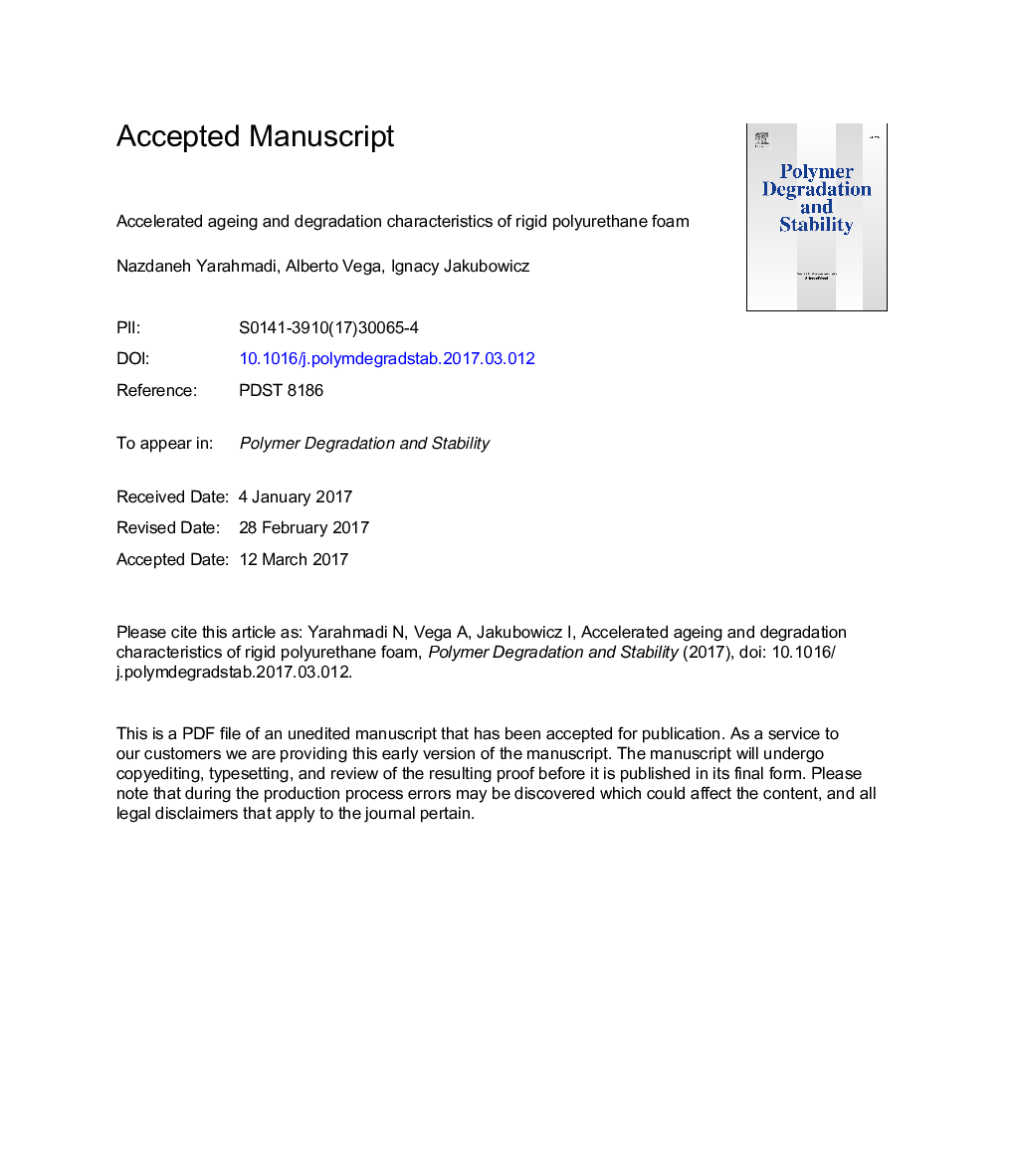| Article ID | Journal | Published Year | Pages | File Type |
|---|---|---|---|---|
| 5200849 | Polymer Degradation and Stability | 2017 | 24 Pages |
Abstract
The urgent need for revision of the normative test method (EN 253) for the lifetime prediction of district heating pipes requires a better understanding of the failure mechanisms involved. Therefore, various methods were used to study thermal degradation characteristics of rigid polyurethane (PUR) foam in both air and nitrogen atmosphere. Accelerated ageing in nitrogen caused insignificant changes, whereas ageing in air caused significant changes in weight, dimensions, chemical structure and cell gas composition, indicating importance of the thermo-oxidative type of degradation. A clear indication of the thermo-oxidative type of degradation was the formation of new carbonyl groups in PUR together with the loss of CH2 groups after ageing in air. Another result of ageing in air was the loss of pentane and cyclopentane, and the formation of some new volatile compounds in the cells of PUR foam. However, despite a large difference in degradation characteristics between the samples aged in air and in nitrogen, no significant difference in the flexural strength of PUR foam was recorded during the induction stage of the degradation process. Furthermore, it is shown that the significant drop in shear strength, which reflects the adhesion force between PUR foam and steel pipe, observed during the early stage of accelerated ageing of district heating pipes is not caused by thermo-oxidative degradation.
Related Topics
Physical Sciences and Engineering
Chemistry
Organic Chemistry
Authors
Nazdaneh Yarahmadi, Alberto Vega, Ignacy Jakubowicz,
